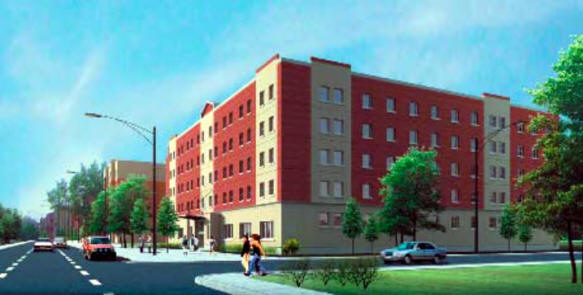Resident Community Support Services
Why We Need Supportive Housing?
Too many men, women, and children experience homelessness in the United States:
- At least a half a million Americans do not have a place to call home each night.
- As many as one percent of all Americans find themselves homeless at some point each year.
- As many as 250,000 American households—including at least 12,000 to 15,000 families with children—have nowhere to call home for years on end.
- Ten percent of those who become homeless every year are people who are homeless for the long term; they use 50 percent of shelter capacity.
For chronically homeless people—who measure their homelessness in years, instead of weeks or months—mental illness, substance use, and physical disabilities often create additional barriers to stability and a new life off of the streets.
Supportive Housing is Permanent Housing
People who live in supportive housing sign leases and pay rent, just like their neighbors. Supportive housing and shelters are not the same thing, but they complement each other. Shelters work well for what they’re designed for – emergencies and short-term situations, not as long-term housing. .
Green Affordable Housing – courtesy of Corporation for Supportive Housing
“Our Mission is to produce quality affordable housing and Supportive Services for our residents with energy efficient features, that are environmentally friendly, thereby reducing the residents monthly bills and operating cost of the property.”
Our Supportive Housing Focus:
- Veterans Supportive Housing
- Re-Entry Supportive Housing
- Distressed Families
Supportive Housing is Cost Effective
It costs essentially the same amount of money to house someone in stable, supportive housing as it does to keep that person homeless and stuck in the revolving door of high-cost crisis care and emergency housing. Cost studies prove that we can either waste money prolonging people’s homelessness or spend those dollars on a long-term solution that produces positive results for people and their communities.
While they were homeless and for two years after they were housed. Among their conclusions: supportive and transitional housing created an average annual savings of $16,282 per unit by reducing the use of public services.
- 72% of savings resulted from a decline in the use of public health services
- 23% from a decline in shelter use
- 5% from reduced incarceration of homeless people with mental illness
This reduction in costs nearly covered the cost of developing, operating, and providing services in supportive housing. In other words, based on the most conservative assumptions—without taking into account the positive impacts on health status and employment status, or improvements to neighborhoods and communities – it costs little more to permanently house and support people than it does to leave them homeless.
And further evidence shows that supportive housing provides public benefits beyond these savings. An analysis of the Supportive Housing Demonstration Program found that supportive housing improved neighborhood safety and beautification, increasing or stabilizing property values in most communities.
Years of experience confirm that neighbors embrace supportive housing as an asset to their communities. Supportive housing projects and their sponsors are often among the “pioneers” in a neighborhood’s renaissance. The Times Square, a supportive housing project in New York that was featured in two 60 Minutes stories, is a prominent example of how supportive housing can raise the development standard in a distressed area, helping to spur other developers and business to invest.
